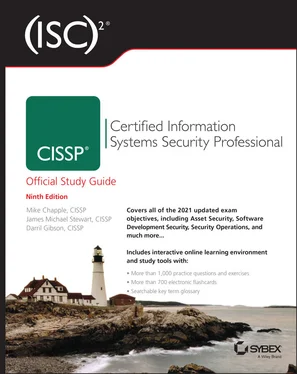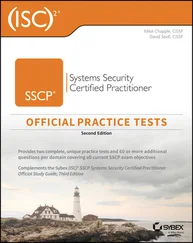Training is teaching employees to perform their work tasks and to comply with the security policy. Training is typically hosted by an organization and is targeted to groups of employees with similar job functions. All new employees require some level of training so they will be able to comply with all standards, guidelines, and procedures mandated by the security policy. Training is an ongoing activity that must be sustained throughout the lifetime of the organization for every employee. It is considered an administrative security control.
Methods and techniques to present awareness and training should be revised and improved over time to maximize benefits. This will require that training metrics be collected and evaluated. Improved awareness and training programs may include post-learning testing as well as monitoring for job consistency improvements and reductions in downtime, security incidents, or mistakes. This can be considered a program effectiveness evaluation.
Awareness and training are often provided in-house. That means these teaching tools are created and deployed by and within the organization itself. However, the next level of knowledge distribution is usually obtained from an external third-party source.
Education is a detailed endeavor in which students and users learn much more than they actually need to know to perform their work tasks. Education is most often associated with users pursuing certification or seeking job promotion. It is typically a requirement for personnel seeking security professional positions. A security professional requires extensive knowledge of security and the local environment for the entire organization and not just for their specific work tasks.
The following are techniques for improving security awareness and training:
Change the target focus of the training. Sometimes you want to focus on the individual, sometimes on customers and clients, and other times on the organization.
Change around topic orders or emphasis; maybe focus on social engineering during one training, then next time focus on mobile device security, and then family and travel security after that.
Use a variety of presentation methods, such as in-person instruction, prerecorded videos, computer software/simulations, virtual reality (VR) experiences, off-site training, interactive websites, or assigned reading of either prepared courseware or off-the-shelf books (such as Scam Me If You Can: Simple Strategies to Outsmart Today's Ripoff Artists, by Frank Abagnale).
Use role-playing by providing attendees with parts in a reenactment both as attacker and defender, but allow various people to offer ideas related to defending or responding to the attacks.
Develop and encourage security champions . These are people who take the lead in a project, such as development, leadership, or training, to enable, support, and encourage the adoption of security knowledge and practices through peer leadership, behavior demonstration, and social encouragement. Often a security champion is a member of a group who decides (or is assigned) to take charge of leading the adoption and integration of security concepts into the group's work activities. Security champions are often non-security employees who take up the mantle to encourage others to support and adopt more security practices and behaviors. Security champions are often found in software development, but this concept can be useful in any group of employees in any department.
Security awareness and training can often be improved through gamification. Gamification is a means to encourage compliance and engagement by integrating common elements of game play into other activities, such as security compliance and behavior change. This can include rewarding compliance behaviors and potentially punishing violating behaviors. Many aspects of game play (derived from card games, board games, sports, video games, and so on) can be integrated into security training and adoption, such as scoring points, earning achievements or badges, competing/cooperating with others, following a set of common/standard rules, having a defined goal, seeking rewards, developing group stories/experiences, and avoiding pitfalls or negative game events. Well-applied game dynamics can result in improved worker engagement with training, an increase in organizational application of lessons, expansion of the comprehension of application of concepts, more efficient workflow, integration of more group activities such as crowdsourcing and brainstorming, increased knowledge retention, and a reduction of worker apathy. In addition to gamification, ways to improve security training include capture-the-flag drills, phishing simulations, computer-based training (CBT), and role-based training, among many others.
It is also important to perform periodic content reviews of all training materials. Reviews help ensure that the training materials and presentation stay in line with business goals, organizational mission, and security objectives. This periodic evaluation of training materials also provides the opportunity to adjust focus, add/remove topics, and integrate new training techniques into the courseware.
Additionally, new bold and subtle methods and techniques to present awareness and training should be implemented to keep the content fresh and relevant. Without periodic reviews for content relevancy, materials will become stale and workers will likely resort to making up their own guidelines and procedures. It is the responsibility of the security governance team to establish security rules as well as provide training and education to further the implementation of those rules.
Troubleshooting personnel issues should include verifying that all personnel have attended awareness training on standard foundational security behaviors and requirements, evaluating the access and activity logs of users, and determining whether violations were intentional, coerced, accidental, or due to ignorance.
A policy violation occurs when a user breaks a rule. Users must be trained on the organization's policies and know their specific responsibilities with regard to abiding by those security rules. If a violation occurs, an internal investigation should evaluate whether it was an accident or an intentional event. If accidental, the worker should be trained on how to avoid the accident in the future, and new countermeasures may need to be implemented. If intentional, the severity of the issue may dictate a range of responses, including retraining, reassignment, and termination.
An example of a policy violation is the distribution of an internal company memo to external entities via a social network posting. Depending on the content of the memo, this could be a minor violation (such as posting a memo due to humorous or pointless content according to the worker) or a major issue (such as posting a memo that discloses a company secret or private information related to customers).
Company policy violations are not always the result of an accident or oversight on the part of the worker, nor are they always an intentional malicious choice. In fact, many internal breaches of company security are the result of intentional manipulation by malicious third parties.
Training and awareness program effectiveness evaluation should take place on an ongoing or continuous basis. Never assume that just because a worker was marked as attending or completing a training event they actually learned anything or will be changing their behavior. Some means of verification should be used to measure whether the training is beneficial or a waste of time and resources. In some circumstances, a quiz or test can be administered to workers immediately after a training session. A follow-up quiz should be performed three to six months later to see if they retained the information presented in the training. Event and incident logs should be reviewed for the rate of occurrences of security violations due to employee actions and behaviors to see if there is any noticeable difference in the rate of occurrence or trends of incidents before and after a training presentation. Good training (and teachable employees) would be confirmed with a marked difference in user behaviors, especially a reduction of security infractions. High scores on subsequent security quizzes months later demonstrate that security concepts are retained. A combination of these processes of evaluation can help determine if a training or awareness program is being effective and is reducing the security incident rate and related response and management costs. A well-designed, engaging, and successful security training program should result in a measurable reduction in employee-related security incident management costs, hopefully far exceeding the cost of the training program itself. This would therefore be a good return on security investment (ROSI).
Читать дальше












